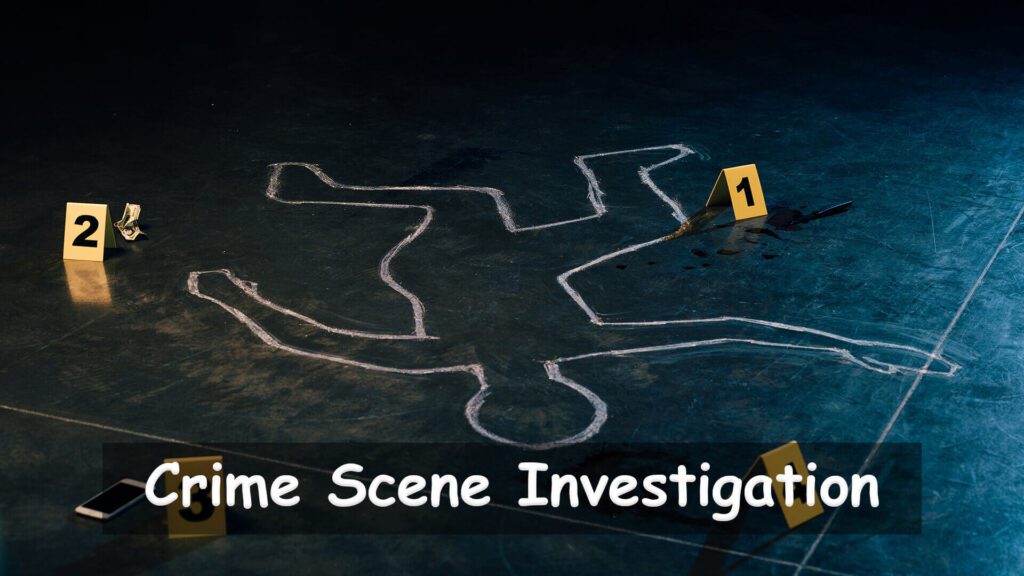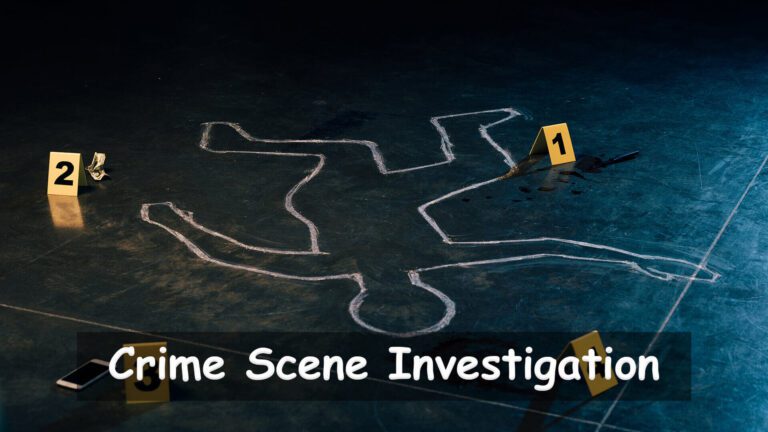Table of Contents
Introduction:
Research or an investigation is a form of inquiry that can be done by private investigators to reveal any truth. Crime case investigation is usually alluding to a request done by the public authority officials. The team deals with the police to reveal any reality and carry equity to the person for investigation.

Police have full power to scrutinize any individual with the goal that reality can be confirmed and uncovered in the official courtroom.
Clue, crime, or you can say criminals are all around the basic three common terms which are met at one point. It is the place where a criminal investigation happens.
Also, it contains records of past events and is an early phase for the criminal case investigation since it will set up and exhibit what happened at the hour of the commission of the offense. Also, it will help with recognizing the criminal by the essential affirmations found at this spot.
Learn the Procedure of Criminal Investigation:
A crime case investigation is a long and monotonous technique. It may illuminate what happened and highlight who did it. The space of the occasion can’t be limited to one spot, so to speak. The number of criminal cases may vary, as shown by the technique for all related crimes.
There could be a fundamental helper, and routinely tertiary crime cases exist in our society. For instance, a criminal group may seize an individual from one region, which is known as the basic crime case investigation type. There are also some types available in which the criminal group refers to the person in any criminal activity with the use of any vehicle or personal data. There are also several other types of criminal cases that exist in the society which can be handled by the expert private investigators of Oklahoma.
Principles of Crime Case Investigation:
During the investigation process of a criminal case, the expert should adhere to scratch guidelines of assessment. They will guide you about the standards of trade which are also known as Locard’s trade rule.
Sometimes it can offer an opportunity to interface the suspect with the criminal case. In some cases, it will be handled by giving proper combinations, and appraisals are made of the scene, loss, and suspect. Any spot crime case investigator will use many tactics and detective skills to resolve any criminal case.
The criminals may leave their fingerprints or their hand impressions on the spot. They can also leave some strands of hair on the substances found on the spot, the paint he scratches, the blood or semen he stores or accumulates, and so on. All of these signs can be taken as proof of victim activity.
The basic evidence can be profitable for the investigator, and with only one sign, they will recollect more evidence. It isn’t humbled by the enthusiasm existing separated from all the other things. It isn’t absent in light of the fact that human onlookers are. It is a genuine confirmation of any criminal activity. Actual proof can’t be correct, can’t lie, and can’t be completely absent. But simple personal investigation can fail to find, analyze and investigate the right problem that can reduce the value of a criminal case.
Crime Scene Investigation Strategies:
It is difficult to uncover the particular taking care of that will be used at every crime location. Each crime location is phenomenal and may require a substitute method to manage setting up the scene. In any case, there is an essential crime location show that should be clung to in all crime locations. These fundamental advances or tasks are performed under the following steps include:
1. Protecting the criminal scene at spot:
As said above by court exchange standard about the cross-trade of proof from or to the scene, setback, and criminal. Accordingly, anyone entering the crime location can alter the proof at the scene.
It is, along these lines, the obligation of the essential authority appearing on the crime location to figure out how to guarantee and ensure about the fast area of the criminal just as the zone to the best degree possible including possible entry and leave centers, so it is imperative to stop a district greater than the hidden degree of the prime location with a view that the cutoff points can be diminished in size at whatever point required.
2. Recording of Crime Scene:
The justification for this movement is to make an interminable record of the crime location in its remarkable articulation that will allow further to imitate a definite point of view of the prime location, which can help in the further assessment and besides at whatever point needed for presentation in true courts. The account should ideally resemble photography, drawing, and notes.
3. Meeting with a witness:
Crime scene investigation fuses taking spectator enunciations to demonstrate with actual proof accumulated at the crime location. An expert should look for a possible onlooker that would help and give more bits of knowledge to the criminal. They should be drawn closer to audit everything saw during the event and moreover for the ID of the criminal.
Crime scene investigation is made to recognize and ensure about the affirmations and besides to have some vision about the events that occurred. Recovering actual proof during the assessment is one of the main perspectives, so for this, a precise chase is significantly basic to ensure that nothing of actual proof is left.
The choice to look through methods used will depend upon the sort of the criminal, its territory and size, and the number of individuals present.
- Line: Searches line up equivalent typically a decent arm away from each other and proceed with their chase along the tracks equivalent from one side of the scene.
- Matrix: Variation of a strip search technique yet also done contrarily.
- Twisting: The request may start at some outside point and move to the route of the twisting until they show up at the point of convergence of the crime location.
- Wheel: The scene is separate as a circle, and the request starts from the center and proceeds with the radii of the circle.
4. Assortment and bundling of actual crime:
It is one of the significant steps in Crime scene examination in light of the fact that each actual proof seen at a crime location should be managed by gathering and pacing it mindfully on the grounds that any adjustment of the proof could delude the examination.
From this time forward, it would be beneficial if the way of thinking for the arrangement and squeezing of the actual verification is with the ultimate objective that its reliability is kept up, so proof assembled is also held in its novel condition.
Each actual proof gathered should be kept flawless and named so that no proof is lost. The distance between the proof should be kept up to stay away from tainting with date, time, region, thing, case number imprinted on it. Fixing is finished by the inspector.
5. Keeping up the chain of care:
The intelligibility of possession or chain of guardianship should be set up whenever evidence is presented in court. The court will require affirmation that confirmation assembled during an assessment and the verification finally submitted to the court is for sure exactly the same.
If you want to exhibit the uprightness of the actual proof, a chain of authority should be kept up. The whole evidence chain shows who had a connection with the proof and under what conditions.
In like manner, the basic sorts of information are required to develop the chain of authority:
- Name or initials of the individual assembling the proof and each individual in like manner having guardianship of it.
- Name of Victim.
- Brief depiction of the thing.
The entire data assists in presenting the sort of guardianship to the court. It will also assist the investigators with surrendering the things into proof.
FAQ:
1. How is the crime evidence collected at each criminal activity?
All crime evidence can be collected in the form of large data to trace the essential evidence in an ordered form. The private investigator can collect evidence with the help of tweezing, taping, or with fingerprints or blood samples of victims.
2. What is the vital thing you have to do in every crime scene case?
The first-ever thing every investigator will have to do while investigating any criminal case is to cautiously and observe the victim’s activity, find out potential evidence and scan all essential environmental conditions.
3. What are the essential phases of the crime scene investigation?
Each criminal case can be resolved under the basic three phases of crime scene investigation. First of all, the private investigator will determine how the crime is committed. Secondly, the investigator will find out the perpetrator and then use different pieces of evidence to support each case in court.



